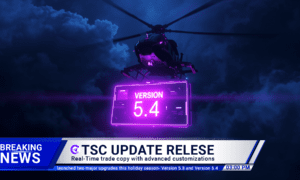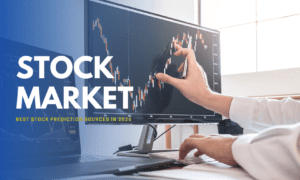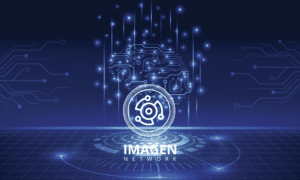When BlackRock announced its BUIDL fund token, which represents $2.8 billion in tokenized U.S. Treasuries and is issued via the regulated platform Securitize, many in the industry saw it as a pivotal moment. Yet, the process of tokenizing even an AAA-rated asset introduces a range of new operational and technical risks, such as smart contract vulnerabilities, that do not exist in traditional finance.
When the same token is launched across multiple blockchains, including Ethereum, Avalanche, Arbitrum, Optimism, Polygon, Solana, and Aptos, the complexity grows. What once seemed like a simple rating becomes far more complicated. Can a tokenized AAA bond on Ethereum truly maintain the same rating when traded on Polygon or Solana? This uncertainty raises important questions for investors, institutions, and the future of on-chain finance.
Particula is focused on tackling this very challenge by providing deeper blockchain-integrated risk analysis. Their approach evaluateas digital assets not only for financial factors like legal compliance and investor protections, but also for technical aspects such as infrastructure, accessibility, and security.
The Illusion of Sameness
The prevailing narrative in the digital assets space is that “a token is a token.” If you hold BUIDL on any blockchain, you’re holding the same risk, the same rights, and the same value. But this assumption glosses over a critical truth: blockchains are not interchangeable. Each network has unique infrastructure, validator diversity, and systemic risk. Treating tokens as identical across chains is like assuming that holding securities at a large, regulated U.S. custodian carries the same risk as holding them at a smaller, less regulated or offshore institution.
Let’s look at the numbers. Currently, more than $261 billion in tokenized assets and stablecoins span over 27 blockchain networks, backed by assets such as T-bills, bonds, and gold. Ethereum dominates tokenized asset deployments with over $7B in total value locked, but competitors like Stellar ($400M+) and Solana ($290M+) are rapidly gaining momentum. These assets are spread across 89+ platforms, with liquidity fragmented by different bridge paths, custody arrangements, and settlement mechanisms. Yet, most analysis and ratings still focus solely on the token and its issuer, ignoring the critical role of the blockchain itself. This oversight is dangerous.
A Tale of Two Chains
Imagine two investors, Alice and Bob. Both buy BUIDL tokens. Alice receives hers on Ethereum, while Bob opts for Solana. On paper, their tokens represent the same underlying U.S. Treasuries. But in practice, their risk exposure diverges:
If a major exploit targets a bridge or if a chain suffers downtime, the impact on token liquidity, accessibility, or even redemption could be profound. In such a scenario, is it fair or safe to say Alice and Bob hold assets with the same risk profile?
Different Chains, Different Investor Realities
When evaluating tokenized assets, investors must look beyond the surface and consider the underlying blockchain metrics that shape their experience. Market capitalization and holder concentration, for example, directly influence liquidity and the ease with which investors can enter or exit positions.
A network with a high market cap and a broad distribution of tokens, such as Ethereum, typically offers deeper liquidity pools and more robust secondary markets. This makes it easier for investors to transact at fair prices with minimal slippage, and it reduces the risk that a small group of holders could manipulate the market or destabilize the ecosystem.
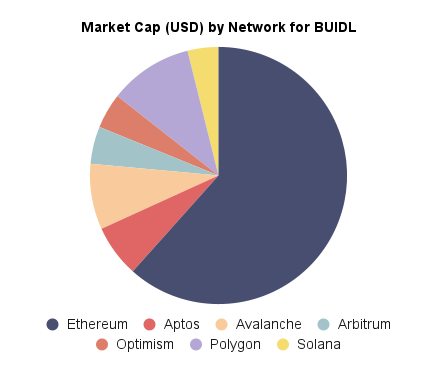
Note: Market Cap as of 18 July 2025, Source: Polyscan, Arbiscan, Etherscan, Aptos Explorer, Avalanche Explorer, OP Mainnet Explorer, Solana Explorer
Another crucial metric is throughput, which is measured in transactions per second. High-throughput blockchains like Solana can process a much larger volume of transactions quickly and at low cost.
For investors, this translates to greater accessibility, especially during periods of high demand. It also supports use cases that require rapid settlement, such as trading or collateral management. However, high throughput can sometimes come with trade-offs in decentralization or stability, which introduces its own set of considerations.
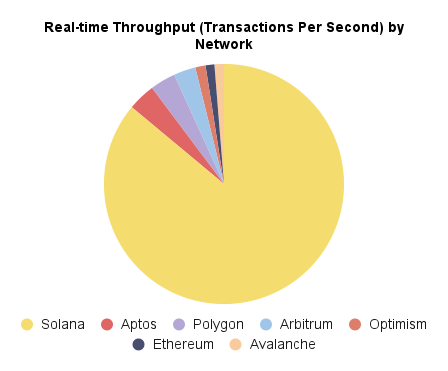
Note: Real-time Throughput as of 18 July 2025, Source:Chainspect
Decentralization is often quantified by the NakamotoCoefficient, which represents the minimum number of entities needed to compromise the network’s liveliness. A higher value, as seen in Avalanche, indicates that no single party or small group can easily disrupt the network’s operation.
This metric is vital for investors who are concerned about censorship resistance, network resilience, and systemic risk. A decentralized network is less likely to experience outages or governance capture, which can directly impact the security and reliability of tokenized assets.
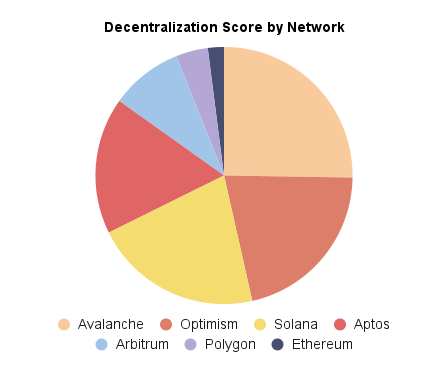
Note: Nakamoto Coefficients as of 18 July 2025, NakamotoCoefficient for Optimism as of 1 October 2024, Source: Nakaflow, Gov.Optimism, Docs.Arbitrum
The speed and certainty of transaction settlement are critical considerations for investors. Time to finality, which refers to how quickly a transaction becomes irreversible, is notably low on Avalanche, giving investors confidence that their transactions are settled swiftly and cannot be undone.
This is particularly important for institutions that require rapid and reliable settlement. Block time, which measures the average interval between new blocks, is especially low on Aptos, resulting in near-instant transaction confirmations. For investors, this means enhanced user experience, improved responsiveness, and the ability to react quickly to market developments. Together, these metrics reduce settlement risk and support more dynamic, time-sensitive financial strategies.
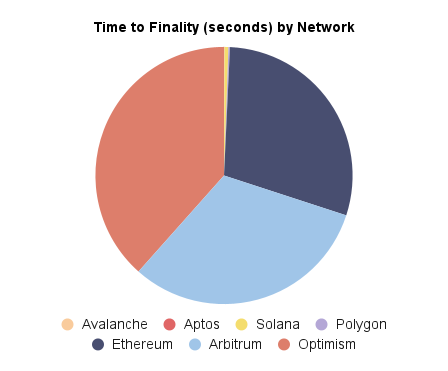
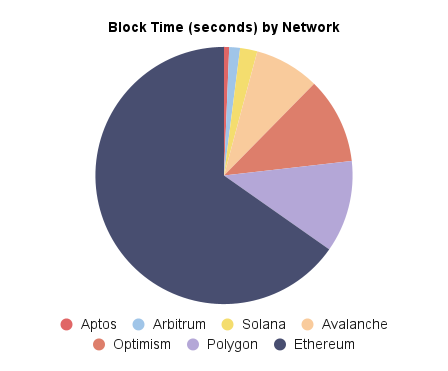
Note: Block Time as of 18 July 2025, Time to Finality as of 18 July 2025, Source: Chainspect
Each of these metrics translates into tangible benefits or risks for investors. Understanding the nuances behind these numbers and how they are reflected in different blockchain ecosystems is essential for making informed decisions in the rapidly evolving world of tokenized assets. Further, these represent just a selection of the numerous factors that must be considered when evaluating a blockchain’s risk profile.
The Case for Blockchain-Integrated Ratings
At Particula, we believe a token’s risk profile is never just about the token; it’s also about the blockchain ecosystem where it operates. That is why we advocate for blockchain-integrated ratings, assessments that evaluate blockchain infrastructure as a core part of the financial stack.
A robust, blockchain-integrated rating should consider several dimensions:
By looking beyond the token and examining the blockchain itself, we bring much-needed transparency to an increasingly complex digital assets landscape. Only then can investors and institutions make safer, more informed decisions, no matter where their assets reside.




